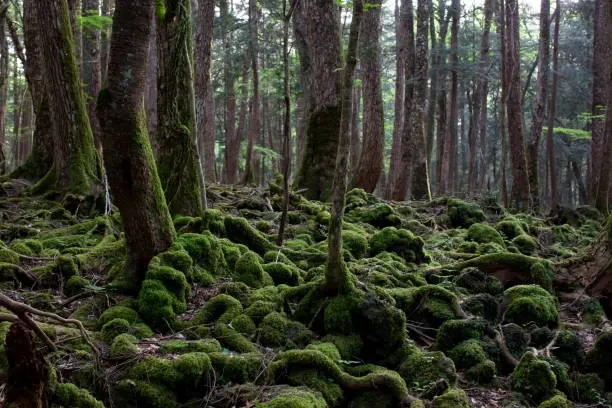The Suicide Forest
Even before being labeled “The Suicide Forest,” this mysterious place was known as Jukai, meaning “Sea of Trees.”
It extends northwest of Mount Fuji, in Yamanashi Prefecture, Japan.
It is not uncommon to encounter signs along the way that attempt to dissuade visitors from taking their own lives.
Indeed, this is a place tragically known for the high number of suicides that occur each year, making it the second most common location in the world, after the Golden Gate Bridge in California, where bodies of those who choose to end their lives are recovered.
The reasons for these tragedies are, of course, unclear.
The Legends
Legends circulate about the curse of the forest, inhabited by the restless souls of the past, which are said to attract the most sensitive spirits, fragile, ill, or those with problems that seem unsolvable at that moment, into the dark forest to be swallowed up and cease all suffering.
Aokigahara Forest is considered by superstitious individuals and those who believe in legends to be a forest haunted by demons.
In Japanese mythology, those who entered this forest without a guide in the past never came out, populating the area with spirits that have escaped from lifeless bodies.
The belief is that the soul that gets lost in the forest cannot leave the earth as it is prey to anguish and sadness, haunting visitors and appearing to those who walk the paths feeling cursed by a terrible spell.
The trees themselves, according to legend, are imbued with the malevolent energy accumulated over the centuries.
And you dark souls, would you venture into the Suicide Forest without a guide?
Films set in or inspired by Aokigahara Forest:
- “Aokigahara” by Shintarō Ishihara, “Grave Halloween” by Steven R. Monroe (horror),
- “The Sea of Trees,” directed by Gus Van Sant
- “Jukai – The Forest of Suicides” (The Forest), a 2016 horror film directed by Jason Zada.
 Subscribe to our YouTube channel
Subscribe to our YouTube channel





